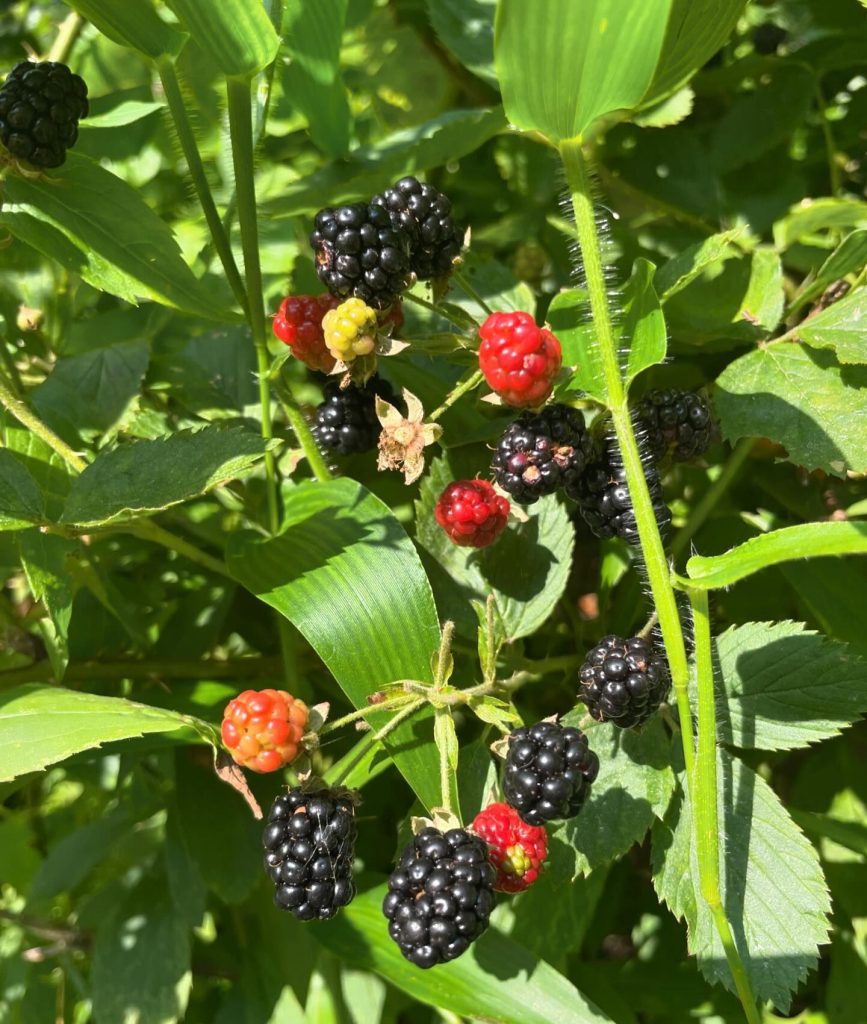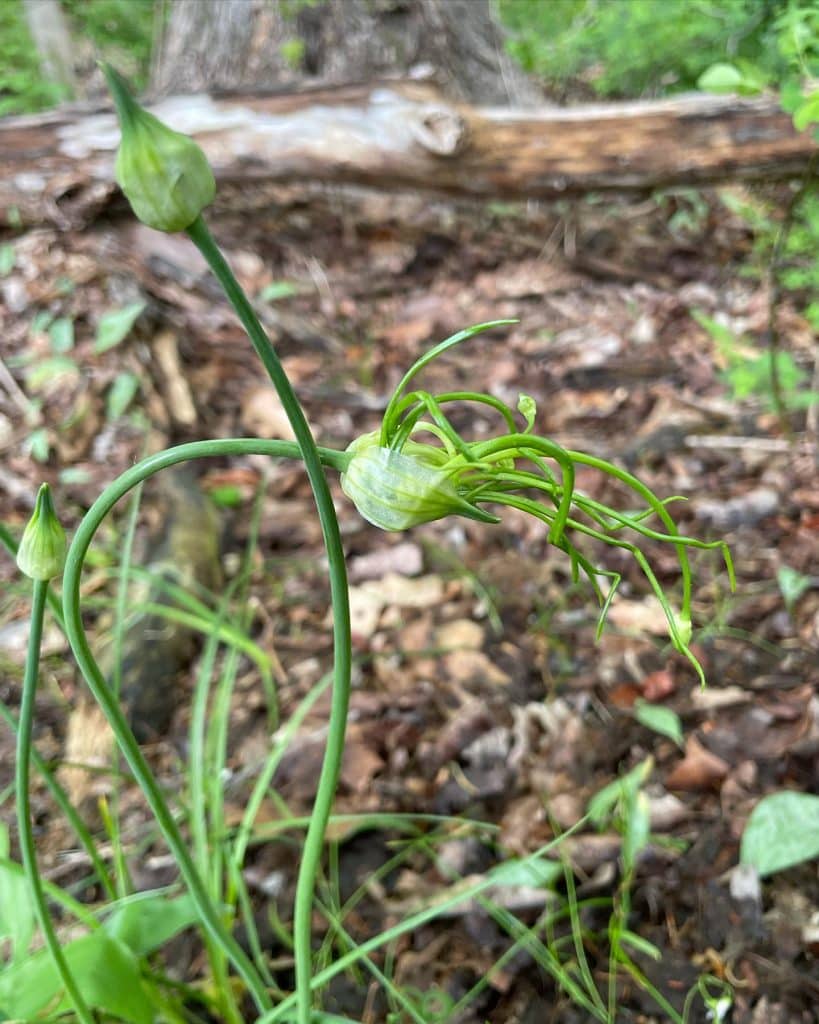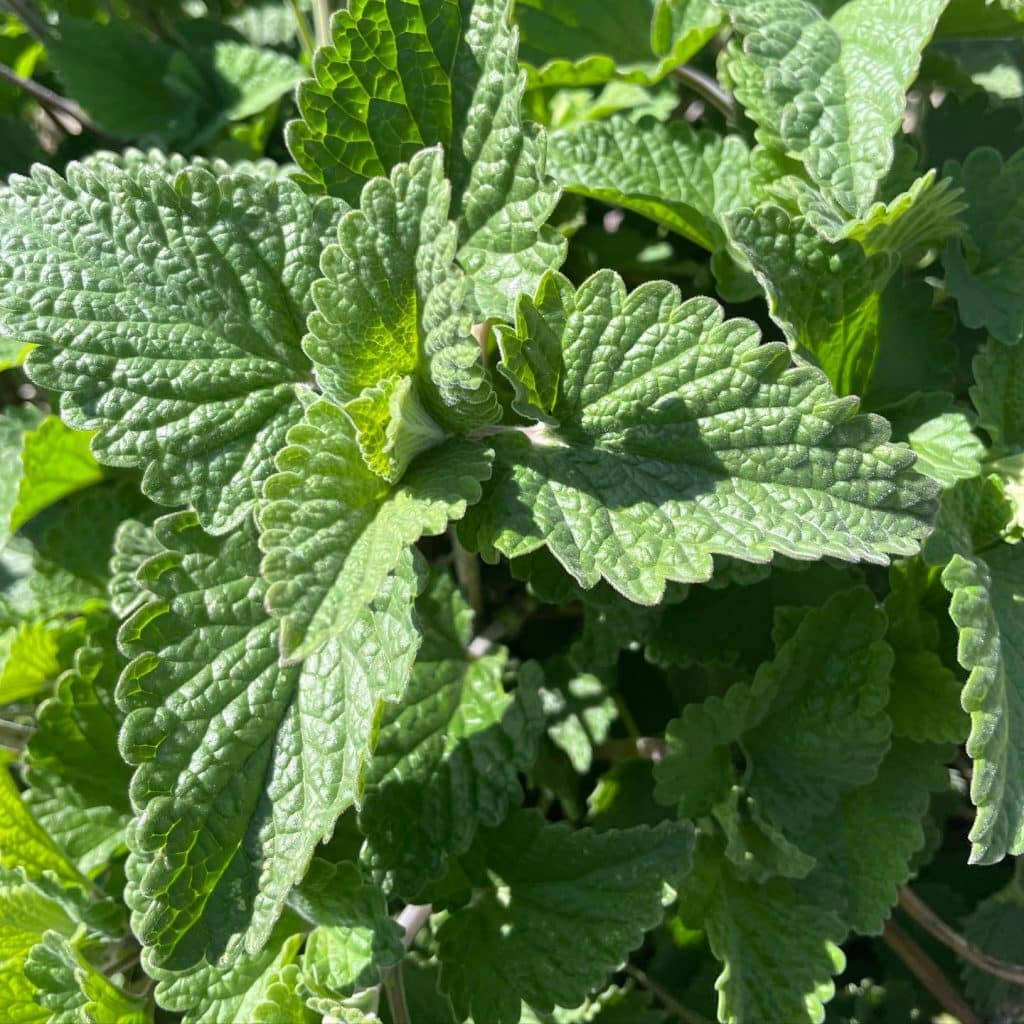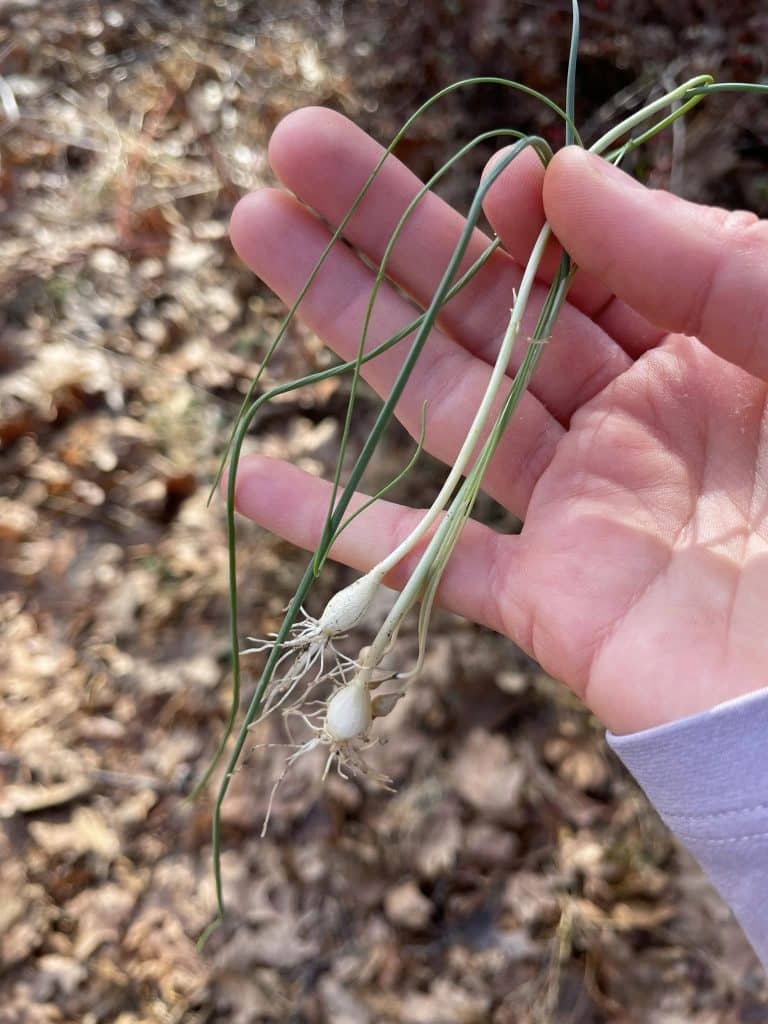Asparagus officinalis – Wild Asparagus

Wild Asparagus (Asparagus officinalis) is the same species as cultivated asparagus. The plant has escaped cultivation and can now be found growing in riverbanks and seashores that receive full to partial sun. Being a perennial, the plant will re-grow in the same spot year after year. Shoots that look like store-bought asparagus appear in early […]
Rubus allegheniensis – Common Blackberry

Common Blackberry (Rubus allegheniensis) is a native perennial with edible berries and leaves. It can be found along forest edges and fields in sun or partial shade. Blackberry canes can be identified by their ridged stems and wide, curved prickles. Leaves are compound with 3 to 7 leaflets. Flowers with five white petals appear in […]
Clinopodium vulgare – Wild Basil

Wild Basil (Clinopodium vulgare) is a native edible perennial in the mint family. It can be found at the edge of forests and in meadows. The leaves are opposite and often have wavy edges. The plant is softly hairy. The stem is four-sided. Flowers are composed of five petals and range in color from pink […]
Rubus strigosus – Wild Red Raspberry

Wild red raspberry (Rubus strigosus) is a native plant that is closely related to cultivated raspberries (Rubus idaeus). Red raspberries can be found at the edges of woods, fields, and roadsides. The leaves are divided into 3-7 leaflets which have a green upper surface and silvery-white undersurface. Berries ripen mid-to-late summer. Red raspberries are delicious […]
Rubus occidentalis – Black Raspberry

Black raspberry (Rubus occidentalis) is one of the first native berries to ripen in the summer. Black raspberries are a native perennial that can be found in disturbed habitats, meadow edges, and stream banks. They can grow in full sun to partial shade. Black raspberry plants have thorny canes that are covered in a whitish […]
Prunus avium – Wild Sweet Cherry

Wild Sweet cherry (Prunus avium) is the same species as the commonly cultivated cherry plant. It is native to Europe and Western Asia but has become naturalized in New England. The tree can be found at forest edges and roadsides. The bark has horizontal lines called lenticels. The oval leaves have serrated edges. Fruits ripen […]
Geranium maculatum – Wild Geranium

Wild geranium (Geranium maculatum) is a native perennial that blooms late spring to early summer. Wild geranium, also known as “Crane’s bill geranium” can be found growing in dense patches in deciduous woodlands and meadows. It can also be easily cultivated in partial shade to full sun. The plant has deeply lobed leaves with […]
Allium tricoccum – Ramps

Ramps (Allium tricoccum) are a native species of onion that can be found late March- early May in CT. Ramps can be found in woodlands with rich, moist, well-drained soil. They usually grow under trees but get full sun since the leaves are not yet out. Ramps have 1-3 leaves that attach to a white […]
Asarum canadense – Wild Ginger

Wild ginger (Asarum canadense) is a native perennial that can be found in moist woodlands. Wild ginger often forms dense colonies by rhizome. It can be found at the base of rocky slopes and along rivers. It prefers partial to full shade. Wild ginger has heart-shaped leaves that are usually in pairs. It produces […]
Allium canadense – Wild Onion

Allium canadense (Wild onion) is an edible native perennial. Wild onion, also known as “meadow garlic”, can be found in meadows, fields, forests, and lawns. It has solid leaves and grows from a bulb. Each flowering plant will have three leaves. The flowers bloom in late spring to summer and are white or pink. The […]
Nepeta cataria – Catnip

Catnip (Nepeta cataria) is a non-native plant in the mint family that can be found wild in New England. Catnip, as with all plants in the mint family, has a square stem and opposite leaves. Catnip can be identified by its heart-shaped and velvety leaves. The plant has a skunky smell that 2/3 of cats […]
Hesperis matronalis – Dames Rocket

Dame’s Rocket (Hesperis matronalis) is an invasive, yet edible plant in the mustard family. In early spring, you can find the basal rosette of Dame’s rocket leaves in disturbed areas. The leaves are covered in small, fuzzy hairs and have irregularly toothed margins. Dame’s rocket leaves taste like peppery arugula. They are best foraged for […]
Allium vineale – Field Garlic

Field Garlic (Allium vineale) is a non-native relative of chives that can be foraged in the colder months. Any leaves with a garlicky scent are edible. Field garlic leaves are thin and hollow. All parts of the plant are edible, including the leaves, bulb, and flowers. The bulb can be left in the ground […]
Thlaspi arvense – Field Pennycress

Field Pennycress (Thlaspi arvense) is a non-native, edible mustard. Field pennycress has alternate, hairless leaves with wavy margins. It produces clusters of white flowers with four petals at the top of the stems. Young leaves can be eaten raw or cooked. After the plant flowers, the leaves will be more bitter. The seeds can be […]
Uvularia sessilifolia – Wild Oats

Wild Oats (Uvularia sessilifolia) is a native woodland plant in the lily family. Wild Oats have alternate leaves that attach directly to the stem. In late April-early May the plant produces a yellow-cream colored flower. Wild Oat shoots can be eaten raw after the leaves are stripped away. Flowers can be added raw to salads. […]
Houstonia caerulea – Quaker Lady Bluet

Quaker Lady Bluets (Houstonia caerulea) are native edible flowers that can be found blooming April-July. Quaker ladies can be distinguished from other bluets by the patch of yellow at their center. Quaker ladies are in the coffee family. They have a taste similar to alfalfa sprouts. An infusion of Quaker lady roots was used by […]
Lactuca canadensis – Canada Wild Lettuce

Canada Wild Lettuce (Lactuca canadensis) is a native edible and medicinal plant in the Daisy family. Wild lettuces can be identified by the hairs on the bottom of the leaf’s central vein. In Lactuca canadensis, the hairs are less consistent than in other species of Wild Lettuce. The young leaves and stems are edible but […]
Fragaria virginiana – Wild Strawberry

The Wild Strawberry (Fragaria virginiana) is a native berry that fruits late spring to early summer. Wild strawberries can be found in partial to full sun at the edge of fields, in woodland clearings, or along paths. The tiny berries are born on hairy stalks. The plant has three leaflets on a divided leaf. Fragaria […]
Pastinaca sativa – Wild Parsnip

Wild Parsnip (Pastinaca sativa) is the same species as cultivated garden parsnip. It is a non-native plant that was brought here from Europe as a crop. Wild parsnip can be found in backyards, field edges, and disturbed areas that receive plenty of sun. Wild parsnip can be identified by its celery-like leaves, deeply grooved main […]
Vaccinium angustifolium – Common Lowbush Blueberries

Common Lowbush Blueberries (Vaccinium angustifolium) ripen July-August in Connecticut. Blueberries are native to New England. There are 9 species of blueberries that grow in New England, 4 of which only grow in Northern New England at higher elevations and 1 of which only grows in coastal wetlands. Common Lowbush Blueberries can be found in […]
